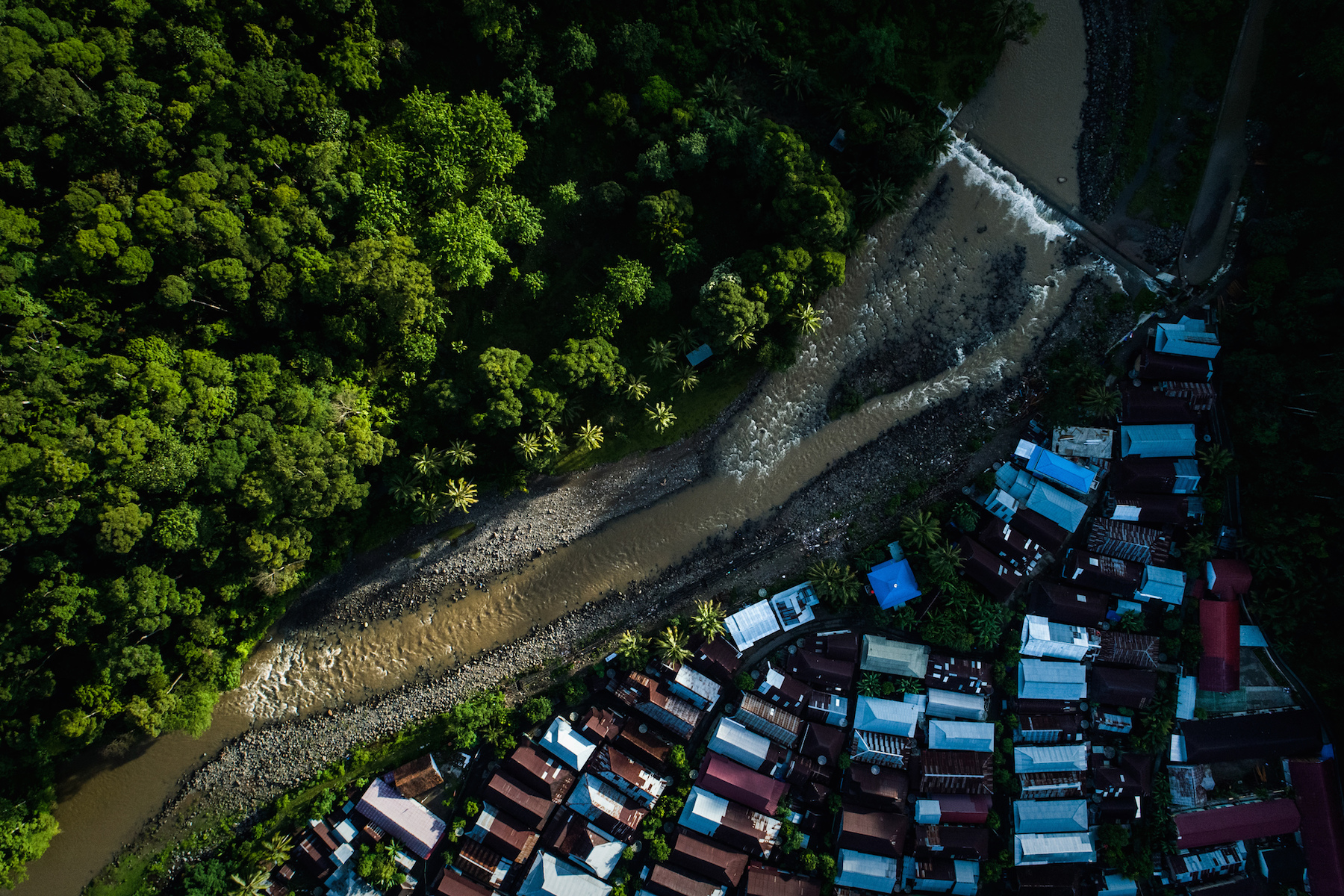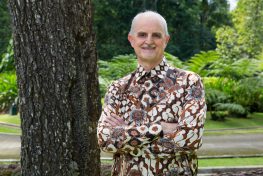Under the theme “Building the Investment Case for Sustainable Landscapes and Restoration,” the 2018 Global Landscapes Forum Investment Case Symposium took place at the World Bank in Washington D.C. on 30 May. Attracting more than 500,000 listeners and engagers, the Symposium brought together local communities, scientific experts, investors and politicians to discuss how public and private finance can better partner to address climate change.
Center for International Forestry Research Director General Robert Nasi opened the Symposium, urging those across the environmental sector to act now, if we are to survive in a “3-degree warmer world.” The following is a transcript of his welcome address.
ROBERT NASI: Welcome to the third edition of the Global Landscapes Forum Investment case. Many of you here and online attended the first two at the Royal Society in London, and we are very pleased to hold today’s event on the premises of one of our founding members, the World Bank. I would like to take this opportunity to thank them profusely for their leadership, continued support and commitment to the GLF community and its mission.
Launched six years ago in Warsaw, the GLF has evolved and grown in parallel with global developments. The key turning point came in 2015 with the adoption of the SDGs and the Paris Agreement. This opened the door to a new era in our quest for sustainable development and set clear targets for action on climate change.
These two developments recognized that we need to rethink the way we go about development. We must work in an encompassing and holistic way that stops jeopardizing nature for human development and creates more equitable, more just and more resilient societies and landscapes. And we also must stop the increase in global average temperatures well below 2 degrees Celsius, and preferably below 1.5 degrees Celsius. The private and financial sectors have also embraced these goals and targets, beginning with the New York Declaration on Forests.
The commitment is there and the awareness is there, but there remains a prevalent and overarching dichotomy in development that places in opposition to each other humans and nature, public and private, developed and developing. No one will be surprised if by 2030 the world continues to be locked in this battle of elephants, with little to show in creation of public-private partnerships.
The second point is that after we have calculated all of the nationally determined commitments (NDCs) in the Paris Agreement, we are still left with a gap of 10 to 35 gigatons of CO2, [the latter of] which is about the global emissions in 2017. So again, we should be not surprised at the end of the year when the Intergovernmental Panel on Climate Change tells us that we have a very, very little chance to achieve the Paris Agreement and its targets. We are very unlikely to achieve a 1.5- or even 2-degree warming limit, and we are more likely end up in a 3-degree world. The question is for how long are we going to end up in this situation before we come back to the more magical 1.5 degrees.
So, we are facing the necessity to reduce or bring to zero our net emissions, but this will not be sufficient. We also need to remove greenhouse gases from the atmosphere and store these gases for a very long time.
My point is simple. We need to stop talking and thinking and acting like we are going to hit these targets. We will not. We are not going to hit the Paris Agreement target. So we must start thinking about how we are going to adapt to a 3-degree world, how we are going to mitigate a warmer and more uncertain climate. And this is where it’s very important that we both act together, public and private.
In any investment case for sustainable landscapes, forests and tree matter. We need to protect the areas of undisturbed forests, we need to manage the increasing share of secondary forests or new forest ecosystems. We must restore degraded lands faster. We must invest in plantations for food and fiber and forest products. And we must promote sustainable agriculture intensification via tree-based systems.
Good public policies and significant public funding for infrastructure, research and other public goods are essential for these climate and development goals. But to me, and that’s why we’re here today, the greatest opportunity for holding back the rise of the global temperatures lies in undertaking fundamental changes in the way that the private economy does business. There must be far-reaching change in how companies and consumers use energy; change in how we manage soils and inputs; change in how we use and manage forests; change in the ways we involve communities.
Companies large and small must adopt measures to ensure their supply chains are devoid of products that contribute to deforestation and to landscape degradation. But sustainable finance continues to be held back by short-termism and cost-benefit analyses that tell us that unless the ton of CO2 reaches a certain price – and, if you want to have negative emissions is about USD 160 per ton – we cannot implement this economically. And while we are waiting for the price to rise, we continue to look for public funds to undertake sustainable development and fight climate change. This is wrong.
We must now play the long game and shift the investment of public and private funds toward preparation for a 3-degree warmer world. We have known for a long time that public funds are fundamental, but they will never be enough or totally useful without private funds working alongside them.
Unfortunately, a big part of the private sector is still shying away from the realities we are facing. But the realization of the risks created by unequal development and climate change have begun to percolate – and in some cases not just percolate, like the insurance and re-insurance industry will tell you when they looked at 2017 as the most expensive year in American history in terms of natural disasters.
Technologies and visionary management together with informed consumers will promote the innovations needed for the shift to a green, sustainable economy. But, this retooling of the private economy requires private finance that not only funds transformational change, but also incorporates changes as a condition for lending that make sustainable development a good business practice.
So who are going to be the winners, surviving in a 3-degree warmer world? People, governments, companies who invest now in mitigating or adapting to these changes, and those who help people to mitigate or adapt or even prosper in these new conditions.
We must invest now in more sustainably managed landscapes and deforestation-, degradation-free value chains and not wait for a better carbon price. It will be too late. Most actions we can take related to the land-based sectors require decades to become effective. They might not bring immediate returns – and clearly some will come faster than others – but their value will increase dramatically in our future world.
If you have read Alice in Wonderland, the Red Queen says, “…here we must run as fast as we can, just to stay in place. And if you wish to go anywhere you must run twice as fast.”
This is what we, private-public, governments-society, indigenous and non-indigenous people are aiming to achieve through the GLF communities, and this is why we are all here. As the Director General of CIFOR, I am very proud to be here and of what we have started. Let’s make sure it does not stop here and that we all contribute to a collaborative leadership that continues to foster positive changes across the world.
Thank you again!
We want you to share Forests News content, which is licensed under Creative Commons Attribution-NonCommercial-ShareAlike 4.0 International (CC BY-NC-SA 4.0). This means you are free to redistribute our material for non-commercial purposes. All we ask is that you give Forests News appropriate credit and link to the original Forests News content, indicate if changes were made, and distribute your contributions under the same Creative Commons license. You must notify Forests News if you repost, reprint or reuse our materials by contacting forestsnews@cifor-icraf.org.

